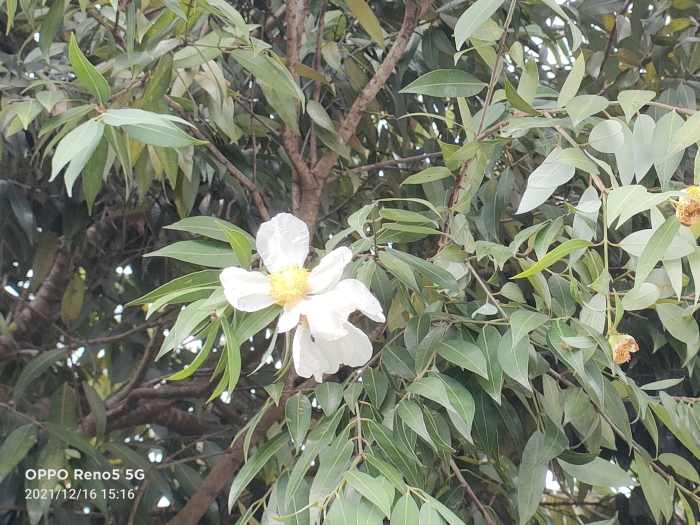Ceylon Ironwood
(Mesua ferrea)
Ceylon Ironwood (Mesua ferrea)
/
/

© Ong Jyh Seng
CC BY-SA 4.0
Image By:
© Ong Jyh Seng
Recorded By:
Copyright:
CC BY-SA 4.0
Copyright Notice:
Photo by: © Ong Jyh Seng | License Type: CC BY-SA 4.0 | License URL: http://creativecommons.org/licenses/by-sa/4.0/ | Uploader: ongzi | Publisher: iNaturalist |

























Estimated Native Range
Summary
Mesua ferrea, commonly known as Ceylon ironwood or cobra saffron, is a slow-growing, evergreen tree native to the wet, tropical evergreen forests of the Indomalayan realm, including Sri Lanka, India, southern Nepal, Burma (Myanmar), Thailand, Indochina, the Philippines, Malaysia, and Sumatra. It can reach heights of over 98 feet (30 meters) with a trunk diameter of up to 7 feet (2.1 meters). The tree is characterized by its dense, conical form, dark green, glossy leaves, and large, fragrant white flowers with a yellow center that bloom from February to April. The flowers are considered showy and are followed by ovoid fruits. The wood is hard and red, valued for heavy structural purposes such as bridge construction.
Ceylon ironwood is celebrated for its durable timber, ornamental flowers, and medicinal properties. It is often used in traditional medicine for various ailments. In cultivation, it is planted as a specimen tree in large gardens and parks. It requires a humid, tropical climate and does not tolerate frost. The tree prefers moist, well-drained soils and can be grown in full sun to partial shade. While it is not commonly grown in temperate regions, it can be a striking addition to botanical gardens specializing in tropical species.CC BY-SA 4.0
Ceylon ironwood is celebrated for its durable timber, ornamental flowers, and medicinal properties. It is often used in traditional medicine for various ailments. In cultivation, it is planted as a specimen tree in large gardens and parks. It requires a humid, tropical climate and does not tolerate frost. The tree prefers moist, well-drained soils and can be grown in full sun to partial shade. While it is not commonly grown in temperate regions, it can be a striking addition to botanical gardens specializing in tropical species.CC BY-SA 4.0
Plant Description
- Plant Type: Tree
- Height: 30-89 feet
- Width: 20-39 feet
- Growth Rate: Slow
- Flower Color: White
- Flowering Season: Spring
- Leaf Retention: Evergreen
Growth Requirements
- Sun: Full Sun, Part Shade
- Water: Medium
- Drainage: Medium, Fast
Common Uses
Bee Garden, Butterfly Garden, Fragrant, Showy Flowers
Natural Habitat
Wet, tropical evergreen forests
Other Names
Common Names: Nagkesar, Indian Rose Chestnut
Scientific Names: , Mesua ferrea, Calophyllum nagassarium, Mesua coromandelina, Mesua ferrea subsp. salicina, Mesua ferrea var. salicina, Mesua nagana, Mesua nagassarium, Mesua nagassarium subsp. sclerophylla, Mesua nagassarium var. coramandeliana
GBIF Accepted Name: